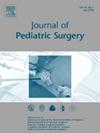Fibrosis in Distal Rectum of Anorectal Malformation: A Clinicopathological Study
IF 2.4
2区 医学
Q1 PEDIATRICS
引用次数: 0
Abstract
Background
The distal rectum may have neuromuscular system abnormalities, which could be the causes of constipation of anorectal malformations (ARMs). This study aimed to characterize fibrosis in the distal rectum. To propose new hypotheses for the mechanism of constipation and provide histopathological evidence for the distal rectum resection during anorectoplasty.
Methods
Thirty intermediate/high-type ARMs patients were included in this study. The hematoxylin and eosin and Masson trichrome stains were used to conduct the histologic examination. The degree of fibrosis of intestinal wall at different distances from the end of the rectum were evaluated, and correlated with clinical features.
Results
The significant histopathological features of the rectal end were thickened intestinal wall, fibrosis in the submucosa and muscularis propria. All the end rectum had moderate/severe fibrosis, and 78 % of the 4–6 cm distal rectum had no or only mild fibrosis. The distal rectal fibrosis degree wasn't related to the ARMs type (P = 0.639), but was related to the rectal dilation degree (P = 0.026). The number of ganglion cells was correlated with the collagen plexus layer thickness (r = −0.537, P < 0.001). The length and width of fistula were related to collagen deposition (r = 0.503, P = 0.028 and r = −0.618, P = 0.014).
Conclusions
The distal rectum of ARMs exhibited fibrosis, smooth muscle dysplasia, and reduced ganglion cells, which may have clinical consequences such as motility abnormalities and increased wall stiffness. The obstruction and dilation of the rectal end may be closely associated with fibrosis.
Level of evidence
Level III.
直肠肛肠畸形远端纤维化的临床病理研究
背景远端直肠可能有神经肌肉系统异常,这可能是肛肠畸形(ARMs)便秘的原因。本研究旨在描述远端直肠纤维化的特征。目的:对便秘的发生机制提出新的假说,为肛肠成形术中远端直肠切除提供组织病理学依据。方法选取30例中高型ARMs患者。采用苏木精、伊红、马松三色染色进行组织学检查。评估离直肠末端不同距离肠壁纤维化程度,并与临床特征相关。结果直肠末端明显的组织病理学特征为肠壁增厚、黏膜下层纤维化和固有肌层纤维化。所有末端直肠均有中度/重度纤维化,78%的4-6 cm远端直肠无纤维化或仅轻度纤维化。直肠远端纤维化程度与ARMs类型无关(P = 0.639),但与直肠扩张程度相关(P = 0.026)。神经节细胞数与胶原丛层厚度呈正相关(r =−0.537,P <;0.001)。瘘管的长度和宽度与胶原沉积有关(r = 0.503, P = 0.028, r = - 0.618, P = 0.014)。结论ARMs的远端直肠表现为纤维化、平滑肌发育不良和神经节细胞减少,这可能导致运动性异常和壁刚度增加等临床后果。直肠末端的梗阻和扩张可能与纤维化密切相关。证据等级:III级。
本文章由计算机程序翻译,如有差异,请以英文原文为准。
求助全文
约1分钟内获得全文
求助全文
来源期刊
CiteScore
1.10
自引率
12.50%
发文量
569
审稿时长
38 days
期刊介绍:
The journal presents original contributions as well as a complete international abstracts section and other special departments to provide the most current source of information and references in pediatric surgery. The journal is based on the need to improve the surgical care of infants and children, not only through advances in physiology, pathology and surgical techniques, but also by attention to the unique emotional and physical needs of the young patient.

 求助内容:
求助内容: 应助结果提醒方式:
应助结果提醒方式:


